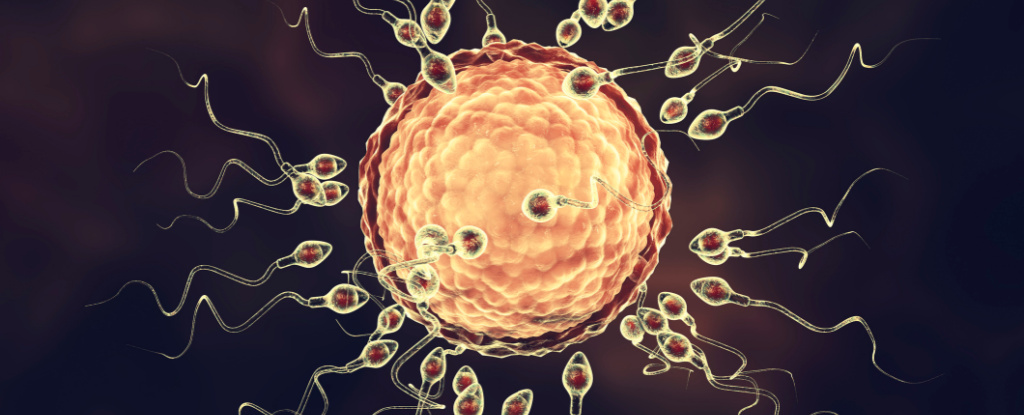Simulations Reveal What Happens When a Sperm Kisses an Egg

The moment when a slithering sperm propels itself head-first into a gelatinous egg is one of sudden change. Within seconds to minutes, chemical changes in the egg’s membrane and outer coat are enacted to block any more sperm from attaching to and entering the oocyte.
A series of reactions also takes place as the sperm and egg recognize each other, chemically speaking, and then begin to merge their membranes together. But despite the significance of these delicate molecular events, their details haven’t been fully resolved.
A new study from researchers at ETH Zurich in Switzerland and Ludwig Maximilian University of Munich in Germany now reveals the intricacies of a special protein complex known for its crucial role in the fertilization process.
“It was assumed that the combination of the two proteins [JUNO and IZUMO1] into a complex initiates the recognition and adhesion process between the germ cells, thereby enabling their fusion,” explains Paulina Pacak, a bioinformatician at ETH Zurich and first author of the study.
This interaction of JUNO – which is located on the outer membrane of the female egg cell – and IZUMO1, found on the male sperm cell surface, is the first known physical link between two newly fusing sex cells.
However, efforts to develop small molecular inhibitors of the JUNO-IZUMO1 union, as a potential contraception, haven’t amounted to much so researchers suspect there might be more to their molecular interactions than we know.
Techniques commonly used to figure out the structure of individual proteins and protein complexes, such as cryo-electron microscopy and protein crystallography, also involve snap-freezing proteins or crystallizing them, which means they only produce a static image of those protein structures and can’t capture their dynamic interactions.
But inside cells, proteins are constantly being made and folded into shape, floating around in a watery mix of cytoplasm, binding to and detaching from their partners, and getting recycled.
So Pacak and colleagues used a Swiss supercomputer to simulate the interactions between JUNO and IZUMO1 in water, therefore more closely resembling their natural forms in cells.
Each simulation spanned just 200 nanoseconds each, but they showed that the JUNO-IZUMO1 complex is initially stabilized by a host of short-lived and weak non-covalent interactions between the protein molecules.
These contacts lasted less than 50 nanoseconds each, and understanding what happens when they are interrupted, either by other molecules or mutations, could provide insights into contraceptives and infertility, the researchers suggest.
Next, Pacak and colleagues simulated how longer-lasting bonds holding the JUNO-IZUMO1 complex together could be destabilized by zinc ions.
Minutes after a sperm and egg unite, the fertilized egg releases a flood of charged zinc atoms which are thought to prevent other sperm from entering the egg by hardening its outer coat.
The simulations showed that the presence of zinc ions bent IZUMO1 into a boomerang shape, so it could no longer firmly bind to JUNO. This suggests the egg’s zinc release could also hinder the binding of approaching sperm.
While these are just computer simulations based on protein sequences and shapes, the findings do provide a new look at the first moments of fertilization.
“We can only find out something like this with the help of simulations,” says Viola Vogel, biophysicist at ETH Zurich and senior author.
“The findings that we derive from them would hardly be possible on the basis of the static crystal structures of the proteins.”
The study has been published in Scientific Reports.
Source : 1